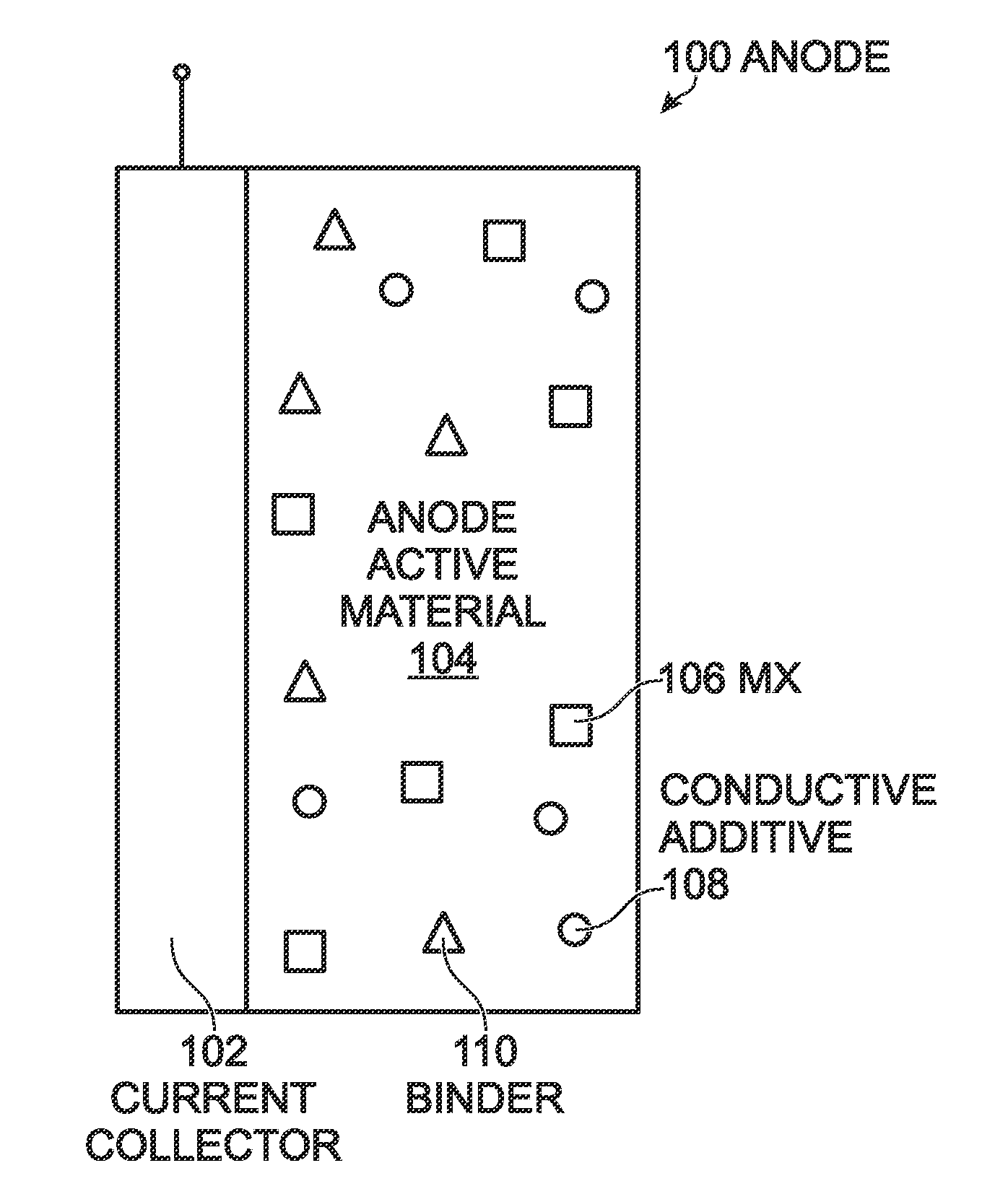Sodium and Potassium Ion Batteries with Halogen Salts
a technology of sodium and potassium ion batteries and halogen salts, applied in the field of electrochemical batteries, can solve the problems of large-scale applications of lithium-ion batteries, rapid sib capacity degradation, and doubtful reserve and increasing cost, and achieve the effects of stabilizing their performance, suppressing the dissolution of sei layers, and promoting better capacity retention
- Summary
- Abstract
- Description
- Claims
- Application Information
AI Technical Summary
Benefits of technology
Problems solved by technology
Method used
Image
Examples
example 1
NaCl Residing in Prussian White during Synthesis
[0043]A Prussian White (PW) cathode is used as an example, but the SIBs or potassium-ion batteries described herein are not limited to use Prussian White cathodes. During the Prussian White synthesis, a large amount of NaCl is used as support salts to increase the Na+-ion concentration in the reaction solution so as to obtain the high Na+-contained Prussian White materials. In this example, the NaCl was intentionally not cleaned from the PW to evaluate the impact of NaCl on the cycling performance of a PW cathode.
[0044]The formula of the PW cathode in this example is NaxMnyFe(CN)6 (excluding water content). Its composition of as-synthesized PW was acquired by inductively coupled plasma elemental analysis (ICP). As a comparison, a sample of the as-synthesized PW was washed thoroughly to remove NaCl. The compositions of the two PW samples are listed in Table 1. The high content of Na+-ions in the as-synthesized PW indicates a residue of...
example 2
NaCl Added to Prussian White Electrode
[0047]Aside from the NaCl resided in the as-synthesized PW cathode, a certain amount of NaCl was added into the pure PW material to make the electrode. The pure NaxMnyFe(CN)6, PW131, was synthesized and NaCl was deliberately cleaned from the sample. According to ICP data, the composition of the PW material was Na:Mn:Fe=1.93:1.08:1. To check the impact of NaCl on sodium-ion battery performance, 3% NaCl was added to PW131 (NaCl-PW131). Mixed with the PVdF and carbon black, PW131 and NaCl-PW131 were made into PW cathodes. Using the same cell configuration and electrolyte as mentioned in Example 1, cells were assembled with these the two kinds of PW cathodes and a sodium metal anode.
[0048]FIG. 6 is a graph comparing the % capacity retention of cells with PW131 and NaCl-PW131 cathodes over 200 cycles with a charge / discharge current of 1C (1C=150 milliamp hours per gram (mA / g)). In 200 cycles, the capacity retention of PW131 was 55.7%, but that of Na...
example 3
NaF Added in the Electrolyte
[0049]Halogen salts can be added into the electrolyte. In this experiment, sodium fluoride (NaF) saturated an electrolyte of 1M NaPF6 in EC / DEC, and then the electrolyte was used to assemble sodium-ion batteries that consisted of PW cathodes and hard carbon anodes. The cathodes were made up of 86% PW material, 7% carbon black, and 7% PVdF binder. The anodes consisted of 95% hard carbon and 5% PVdf binder. As a comparison, an electrolyte of 1M NaPF6 in EC / DEC without NaF was used.
[0050]FIGS. 7A and 7B are graphs comparing the cycling performance of cells with and without NaF electrolyte additive at, respectively, room temperature and 50° C. Initially, all the batteries were cycled twice at 0.1C, and then charge currents of 0.5C and discharge currents of 1C were used. At room temperature, the batteries showed a similar cycling performance, but NaF increased the reversible capacity in the PW / HC sodium-ion batteries at 1C (FIG. 7A). At 50° C., batteries with...
PUM
| Property | Measurement | Unit |
|---|---|---|
| temperature | aaaaa | aaaaa |
| temperatures | aaaaa | aaaaa |
| concentration | aaaaa | aaaaa |
Abstract
Description
Claims
Application Information
 Login to View More
Login to View More - R&D
- Intellectual Property
- Life Sciences
- Materials
- Tech Scout
- Unparalleled Data Quality
- Higher Quality Content
- 60% Fewer Hallucinations
Browse by: Latest US Patents, China's latest patents, Technical Efficacy Thesaurus, Application Domain, Technology Topic, Popular Technical Reports.
© 2025 PatSnap. All rights reserved.Legal|Privacy policy|Modern Slavery Act Transparency Statement|Sitemap|About US| Contact US: help@patsnap.com



